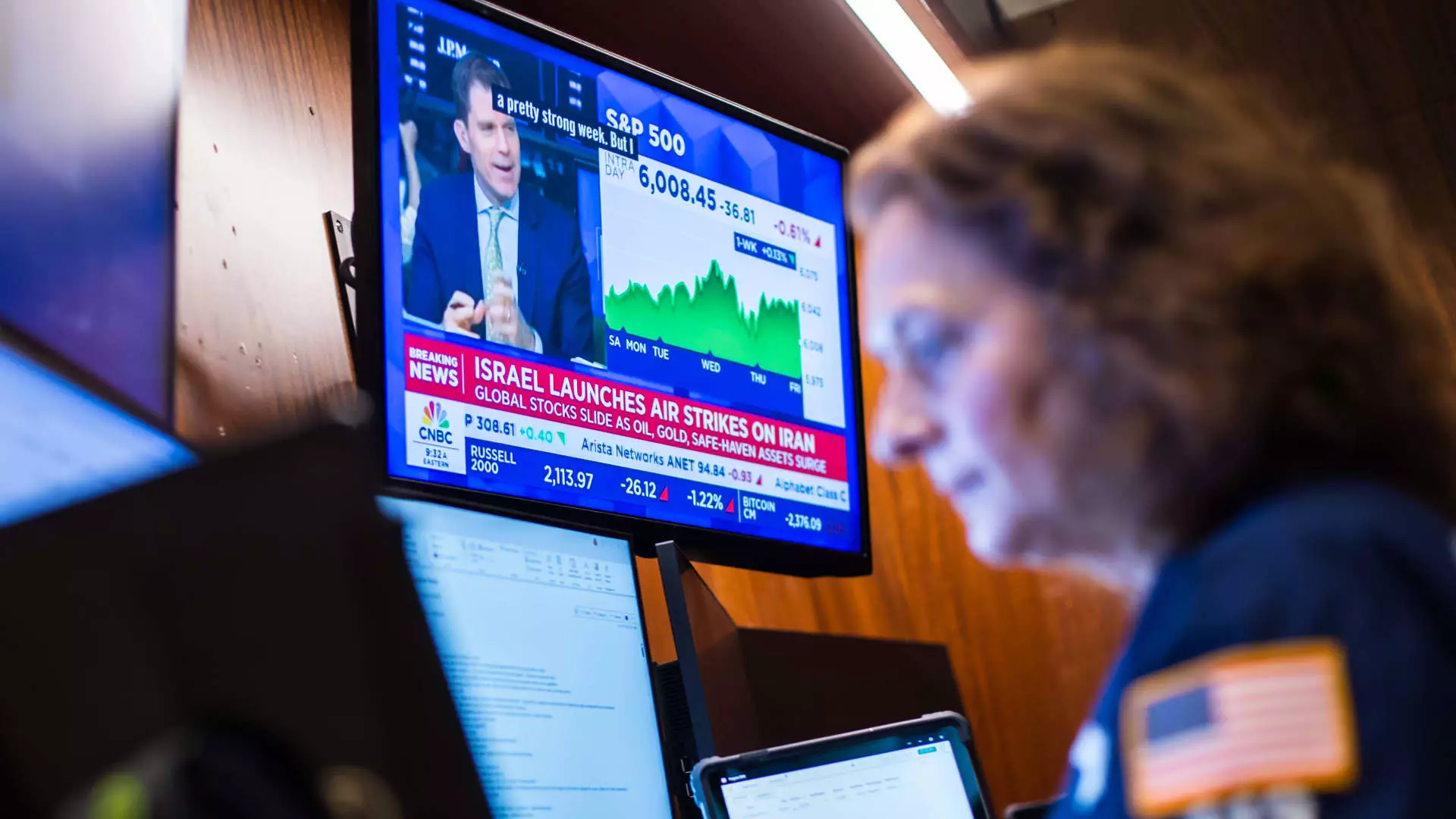An ordinary week in the financial markets quickly descended into turbulence as Friday saw Israeli military action against Iranian nuclear facilities. This provocative event sent shockwaves through global markets, stirring volatility reminiscent of earlier geopolitical crises. The immediate aftermath saw the S&P 500 and Nasdaq Composite indices plummet by 1.13% and 1.3%, respectively, while commodities such as Brent and West Texas Intermediate crude oil experienced surges of approximately 7% and 7.5%. Gold, often viewed as a safe harbor in troubled times, hit a two-month high as investors scrambled for stability amidst the chaos unfolding in the Middle East.
Leading up to this upheaval, markets were showing promising signs of stability and potential growth. The major indices seemed poised for a positive weekly closing but were abruptly halted in their tracks. The S&P 500 and Nasdaq recorded losses for the week, snapping back-to-back winning streaks that many had hoped would continue. To add insult to injury, the U.S. dollar, which typically benefits during periods of uncertainty, found itself facing headwinds as investors re-evaluated its strength against the backdrop of evolving global dynamics.
Meanwhile, the diplomatic space gave investors a glimmer of hope with an announcement from U.S. and Chinese officials about a refined framework for trade negotiations, particularly concerning rare-earth minerals. While this news provides a foundation for optimism, the stark reality remains: geopolitical tensions often cast a long shadow over market sentiment and decision-making, breeding uncertainty and volatility.
Encouraging Economic Data Amidst Turbulence
Despite the political unrest, the economic indicators released during the week offered some encouraging news, particularly concerning inflation. On both Wednesday and Thursday, reports revealed that inflationary pressures may be easing. The Consumer Price Index (CPI) indicated that core prices increased less than anticipated, suggesting a slowing trend in inflation. Additionally, the Producer Price Index (PPI), a reliable measure of wholesale price changes, mirrored this sentiment, coming in lower than expected.
Still, the labor market displayed signs of weakening, albeit without complete breakdowns. Weekly jobless claims remained unchanged, showing resilience in employment numbers, while continuing claims held firm at multi-year highs. Overall, the combination of softening inflation and steady employment figures points to evolving opportunities for consumers, subtly enhancing their purchasing power amid market fluctuations. This shift in consumer dynamics may provide businesses a window for growth, despite external pressures.
Artificial Intelligence: The Driving Force of the Future
This week also saw significant developments in the realm of artificial intelligence (AI), which remains a pivotal driver for market momentum. As technology giants vie for supremacy in the generative AI sector, their actions and announcements have not gone unnoticed. Apple’s annual Worldwide Developers Conference (WWDC) elicited muted expectations, ultimately leading to disappointment due to a lack of substantial AI announcements. This serves as a reminder that even established players face challenges in meeting investor expectations.
On a contrasting note, Meta Platforms generated excitement with its announcement of a substantial investment in Scale AI. The incorporation of Scale’s CEO into a new “superintelligence” division reflects Meta’s aggressive strategy to push the boundaries of artificial general intelligence (AGI). This move exemplifies how companies are increasingly prioritizing AI in their overall business strategy in a race that may redefine the technological landscape.
Further affirming the buzz surrounding AI, Nvidia CEO Jensen Huang’s comments during the GTC event in Paris stressed the need for significantly ramping up computing capacity, driven by demand from both hyperscale customers and sovereign entities. Huang’s prediction that Europe could see a tenfold increase in compute capacity over the coming years underscores the burgeoning opportunities within the AI sector.
Additionally, Oracle’s impressive quarterly results and subsequent stock surge illustrate growing market confidence in AI-related initiatives. Their forecast for a staggering 70% revenue increase in AI computing power drives home the point that robust demand exists. AMD, too, made headlines with its unveiling of a next-generation AI server chip slated for 2026, signifying the ongoing rivalry in this domain. The company’s partnership with OpenAI, the creators of ChatGPT, positions it well within the AI landscape, ensuring it remains competitive as the sector evolves.
The interplay between geopolitical strife, economic indicators, and advancements in AI create a complex tapestry of opportunity and risk. As investors navigate these turbulent waters, staying vigilant and informed will be crucial in exploiting the potential that lies within these intersecting trends.

